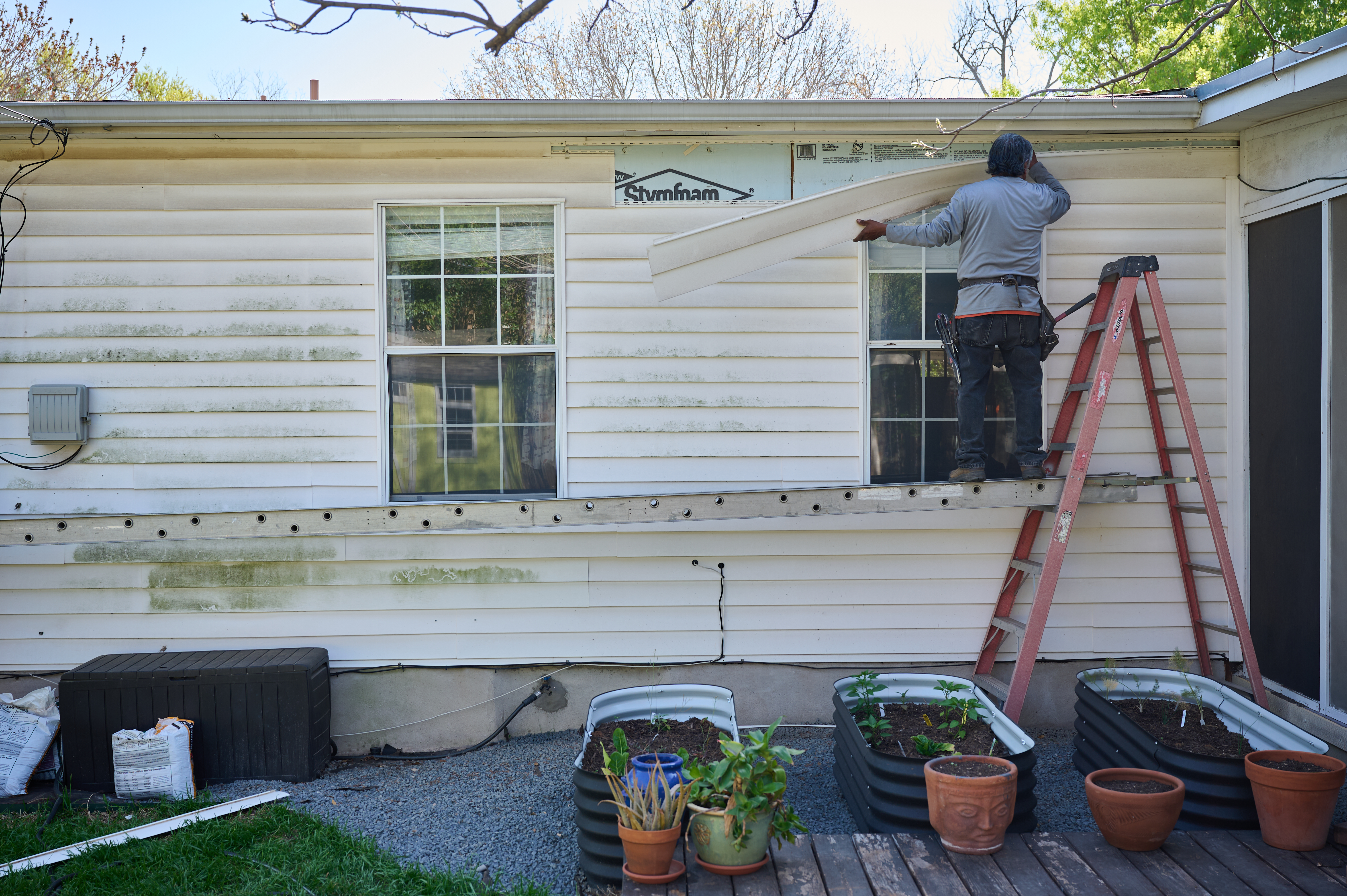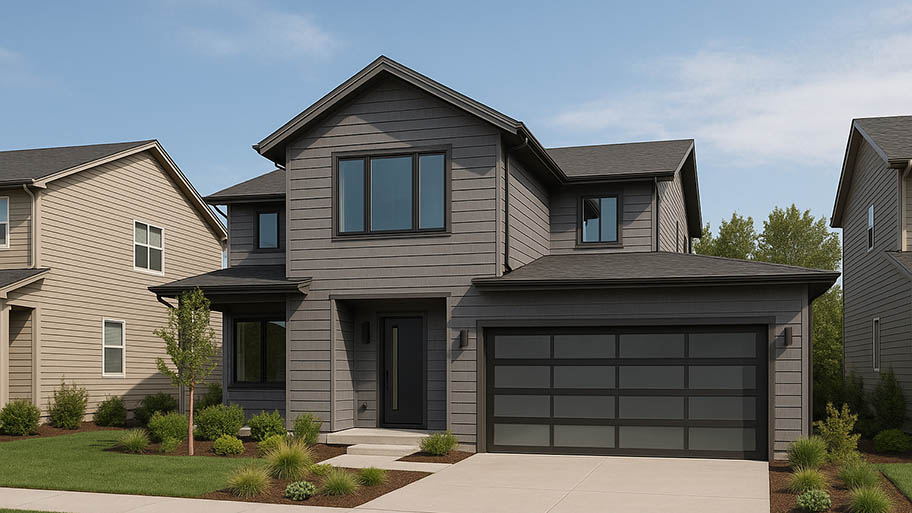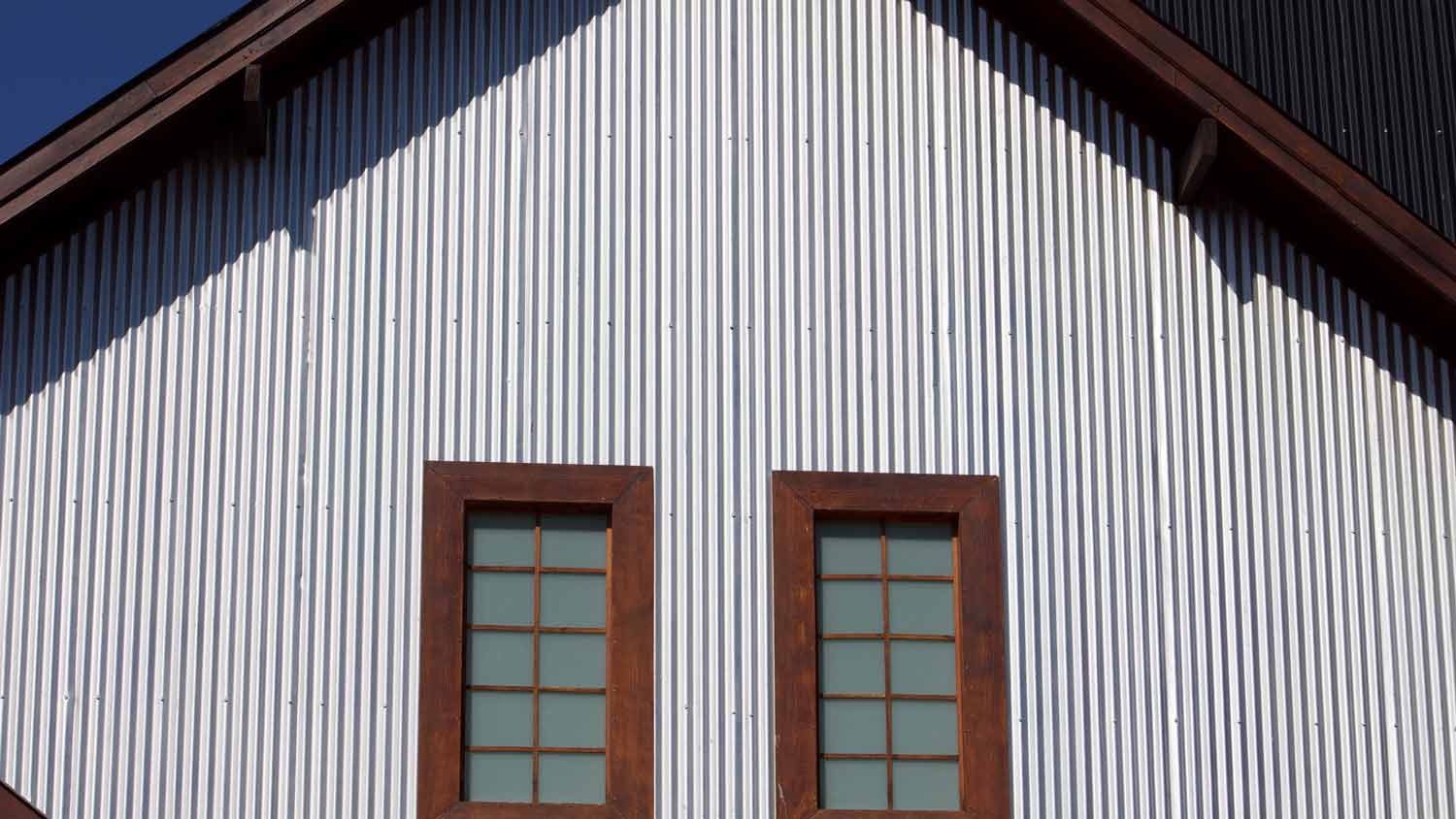
Siding replacement costs around $11,000 on average, but several factors influence what you’ll pay. Our guide breaks down all the siding cost factors.
Here's why your vinyl siding is melting


A grill, fire pit, or other heat source being used beside a home's exterior can ruin siding.
The most common cause of melting vinyl siding is heat that's reflected off of windows.
While high-efficiency windows can quickly damage vinyl siding by bringing the temperature to 200 degrees Fahrenheit, the solution isn't necessarily to have windows replaced.
Damaged vinyl siding should never be ignored because it can allow for water damage to compromise your home's wood structure.
Have you noticed your vinyl siding melting? Unfortunately, this siding issue is more common than most homeowners realize. You may be scratching your head while trying to figure out what's causing the great softening. This list of three common causes of melting vinyl siding can help you get a solid idea of what's happening with your home.
Contact a pro to diagnose any potential damage to your home's siding, as they may be able to identify damage that is difficult to spot.
If you spend time cooking outside with a gas, propane, or charcoal grill, you could unknowingly be roasting your home's siding because the heat is too close to your house. The solution here is to move your grill further away from your home. If you have a fire pit at your home, this could also be contributing to your problem with melting vinyl siding. A fire pit should be at least 15 feet away from a home.
Do you have low-E windows at your home? Also known as low-emissivity windows, low-E windows contain gas that's been coated with an invisible metallic oxide that allows natural light to enter the home while deflecting ultraviolet (UV) rays and infrared light back outside. While these windows can help lower heating and cooling costs by improving your home's efficiency, they can cause one commonly overlooked problem.
Low-E windows can actually cause vinyl siding to melt. Blame it on something called solar distortion. When solar distortion occurs, sunlight reflected off of nearby low-E windows is directed intensely at vinyl siding. The effect is similar to what happens when you start a fire using a magnifying glass on a sunny day. Vinyl siding will begin to melt when its temperature reaches 165 degrees Fahrenheit. Solar distortion can easily cause temperatures to reach 200 degrees Fahrenheit.
It might seem like the only way to prevent vinyl siding from melting is to replace low-E windows with new windows. However, blocking light can actually be just as effective. Some options include:
Installing an awning over the window that's causing the solar distortion.
Planting trees or shrubs to create natural shade.
Putting a shade screen over a low-E window.
In addition to reducing the reflection caused by the window, it's also important to fix damaged siding if melting has already occurred. Allowing siding to remain warped or melted could leave gaps where moisture and pests can get into your home's framework. When left unaddressed, this can cause expensive structural damage.

If melted vinyl siding is wavy, this could actually be the result of warping that was caused by a manufacturing defect. The defect may have been subtle enough for the installer to overlook it. It's also possible that a contractor simply decided to go ahead with an installation without addressing the issue.
If you're not able to find a low-E window that could be to blame for why vinyl siding is melting, it might be time to investigate the defect angle. If your siding was installed within the past 50 years, there's a good chance that it still has an active manufacturer warranty. Bring in a siding expert to inspect the issue for you to get an official diagnosis that may be used to file a warranty claim. If possible, use a different company from the one that installed the siding in order to get an objective inspection that will look for product defects and potential installation mistakes.
If you've heard about the growing phenomenon of vinyl siding melting that's caused by energy-efficient windows, you may be curious about how you can prevent the issue. Walk around the home to do an inspection to look for visible light reflections on your siding. This inspection should be done at midday on a full-sun day.
You might not be out of the woods just because you don't have low-E windows at your home. In some cases, a neighbor's low-E windows can actually reflect sunlight at other homes. This is why everyone should take a few minutes to look for signs of solar distortion on your siding.
If you live in a high-sunlight area, the solar distortion affecting your home may be too widespread to be fixed with shade and awnings. In this case, looking into alternative siding options could be smart. With both wood siding and aluminum siding being resistant to melting, homeowners dealing with melting issues with vinyl siding should research the facts on wood vs vinyl siding and aluminum vs vinyl siding.
Cement-based Hardie board siding is another attractive option that won't warp or melt when exposed to heat. With Hardie board siding cost ranging from $5 to $15 per square foot, this upgraded option does cost more than the $3 to $12 most homeowners are paying for vinyl. If you're still a fan of vinyl after weighing all of the vinyl siding pros and cons, you can consider increasing heat resistance by settling somewhere in the middle with insulated vinyl siding cost. With help from a local vinyl siding repair company, you should be able to come up with a solution for keeping your home protected from the common factors that destroy siding.
From average costs to expert advice, get all the answers you need to get your job done.

Siding replacement costs around $11,000 on average, but several factors influence what you’ll pay. Our guide breaks down all the siding cost factors.

Cedar, pine, cypress, or fir—wood siding is a durable and elegant choice for the outside of your home. Here are the wood siding costs to expect.

The stone veneer siding cost you’ll pay depends significantly on materials and local labor costs. Learn more about factors that affect the project’s cost.

Exterior Insulation and Finish Systems, or EIFS, is an exterior finish that protects and beautifies your home. Learn how to install EIFS in five steps.

Discover who to hire for metal siding installation and who to hire to install metal siding. See how the pros work, and get started today.

Frieze board can transform a home by adding depth and style. Keep reading to learn what frieze board is and how to use it to enhance your home’s appearance.